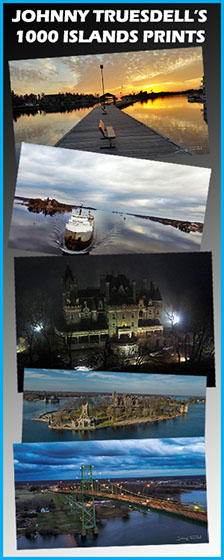As the St. Lawrence Seaway begins to celebrate its 50th anniversary, these celebrations ring hollow here on the shores of the St. Lawrence River and for many throughout the Great Lakes region.
A Legacy of 50 Years of Damage
The St. Lawrence Seaway has chronically over promised and under-delivered. Great Lakes and St. Lawrence River communities were promised an ‘economic renaissance’, but instead, we were handed significant environmental problems, from oil spills to invasive species.
Communities on the River and Lakes remember all too well the predictions and promises made back when the Seaway was being built - economic growth, new industry and jobs, and a surge in population that would transform our small towns into world class port cities.
(You can download our fact sheet to read some of the claims made by the Seaway over the years.)
No Time to Celebrate
Sadly, none of the forecasted benefits of the Seaway arrived. And today, those of us living along the River and Lakes are taking stock of 50 years of damage and wondering what the celebration is all about.
For example, after 50 years, River communities have been left with:
- 188 invasive species from around the world, brought into our freshwater system in the ballast tanks of ocean going vessels;
- 300,000 gallons of crude oil spilled out of a tanker onto our shorelines in 1976;
- nearly 50% of our coastal wetlands have been lost due to stabilized water levels since the Seaway was built; and
- spring icebreaking to open shipping lanes early has caused damage to fish and wildlife habitats.
And the list can go on and on.
Future Challenges Loom
In addition to historic damages, the navigation industry must start planning now for the realities of climate change. Forecasts show that water levels in the next 50 years may be significantly lower. Conservation groups are raising the alarm that attempts to continue business as usual will dramatically increase the Seaway’s environmental impacts.
Jennifer Nalbone, with Great Lakes United put it best:
“Right now the industry sees few options to address climate change: reducing loads, which increases costs, or pushing for more dredging and channelization, which seriously damages the ecosystem. This sort of antiquated thinking - molding the ecosystem to fit shipper’s desires - is the same thinking that got the Seaway and the Great Lakes where they are today,” said Nalbone. “The reality is, we cannot dredge our way out of climate change impacts. The Seaway has an opportunity and a responsibility to reinvent itself.”
A Time for Action
If the Seaway wants to remain viable for another 50 years, it must:
- ensure that the damaging influx of invasive species is stopped,
- aggressively plan to adapt to lower water levels in ways that will not damage the Lakes and River,
- and, in turn, be part of restoring the Great Lakes by charting a new, truly sustainable course for future operations.
Failure to do so will put the livelihoods of the people and species that rely on these waters, as well as the industry itself, at stake.
To Learn More
To read more about this issue, visit the following resources:
- A collection of Seaway quotes from news articles, spanning the past 50 years
- A factsheet exploring some of the claims made by the Seaway Corporation
- Read perspectives from experts throughout the Great Lakes region on 50 years of Seaway operation and future challenges to shipping on the Great Lakes and St. Lawrence River
- Read a joint press release from Save The River, Great Lakes United and National Wildlife Federation
- Visit Great Lakes United’s Seaway 50 website.




